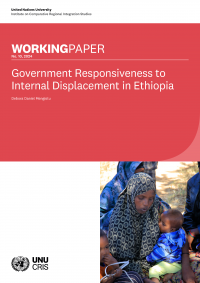Government Responsiveness to Internal Displacement in Ethiopia

Internal displacement in Ethiopia has a long history. In the 1980s, the government implemented ‘voluntary resettlement programs’ aiming to mitigate famine and balance ecological pressures in the north. However, the voluntary nature of this resettlement was contested, and the project had political motives.
This paper explores the Ethiopian government’s response to internal displacement in the country. It argues that the government’s recognition of internally displaced persons (IDPs) is a mixed bag, with IDPs sometimes being indirectly deprived of their status by the government. For instance, the government has been reluctant to recognize IDPs, downplaying incidents of displacement, and launching swift, and at times forcible, return processes.
The paper also finds that the institutional and legal frameworks for dealing with internal displacement are weak, with the institutional framework characterized by a lack of clarity regarding institutional mandates. The ad hoc system for responding to internal displacement, the paper argues, is indicative of the government’s quick-fix approach to the problem.
The paper concludes by underscoring the need for not only state legislations and IDP policies but also of political commitment and institutional capacity for an effective response to internal displacement. It calls on the Ethiopian government to fulfill its commitment to the obligations of the Kampala Convention, which it ratified in 2020.
